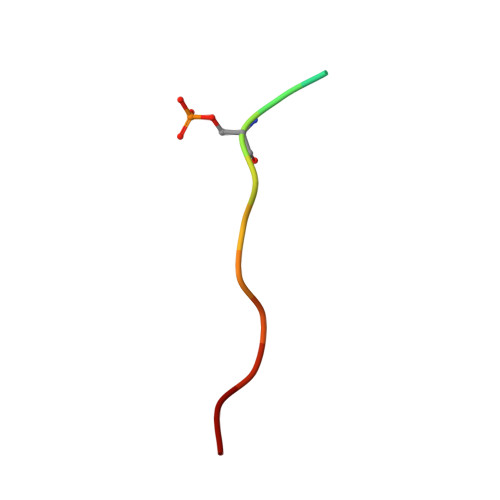Structural evidence for direct interactions between the BRCT domains of human BRCA1 and a phospho-peptide from human ACC1
Shen, Y., Tong, L.(2008) Biochemistry 47: 5767-5773
- PubMed: 18452305
- DOI: https://doi.org/10.1021/bi800314m
- Primary Citation of Related Structures:
3COJ - PubMed Abstract:
The tandem BRCA1 C-terminal (BRCT) domains are phospho-serine/threonine recognition modules essential for the function of BRCA1. Recent studies suggest that acetyl-CoA carboxylase 1 (ACC1), an enzyme with crucial roles in de novo fatty acid biosynthesis and lipogenesis and essential for cancer cell survival, may be a novel binding partner for BRCA1, through interactions with its BRCT domains. We report here the crystal structure at 3.2 A resolution of human BRCA1 BRCT domains in complex with a phospho-peptide from human ACC1 (p-ACC1 peptide, with the sequence 1258-DSPPQ-pS-PTFPEAGH-1271), which provides molecular evidence for direct interactions between BRCA1 and ACC1. The p-ACC1 peptide is bound in an extended conformation, located in a groove between the tandem BRCT domains. There are recognizable and significant structural differences to the binding modes of two other phospho-peptides to these domains, from BACH1 and CtIP, even though they share a conserved pSer-Pro-(Thr/Val)-Phe motif. Our studies establish a framework for understanding the regulation of lipid biosynthesis by BRCA1 through its inhibition of ACC1 activity, which could be a novel tumor suppressor function of BRCA1.
Organizational Affiliation:
Department of Biological Sciences, Columbia University, New York City, New York 10027, USA.
















